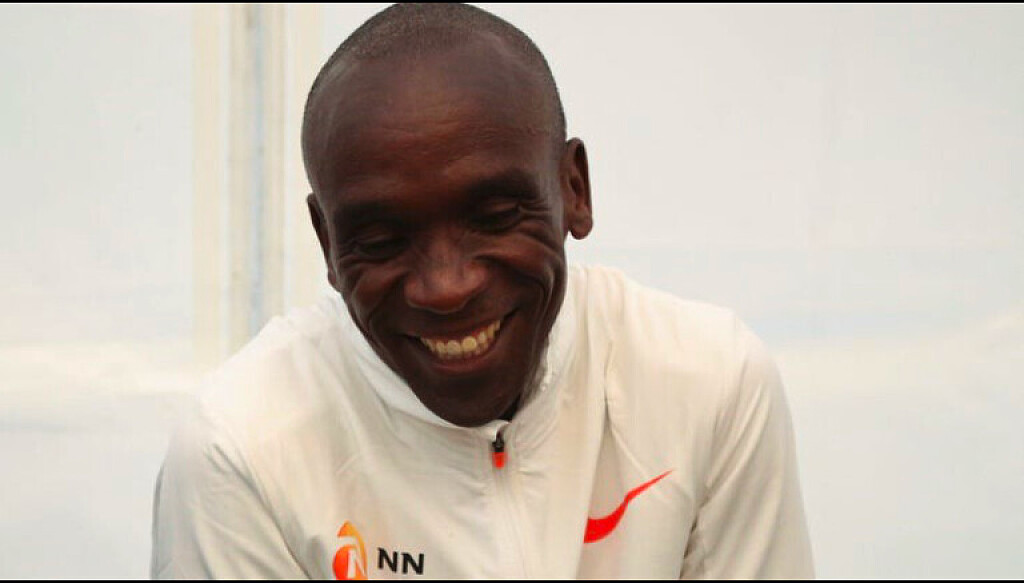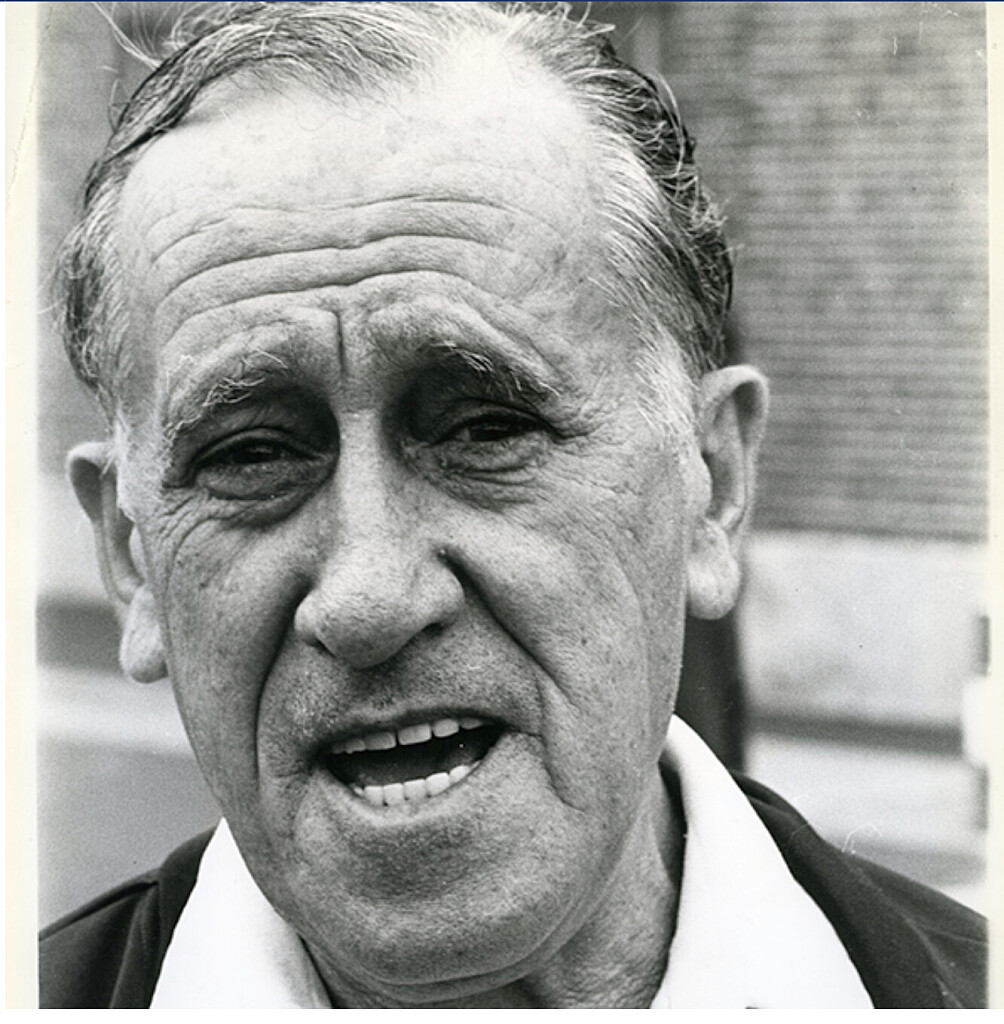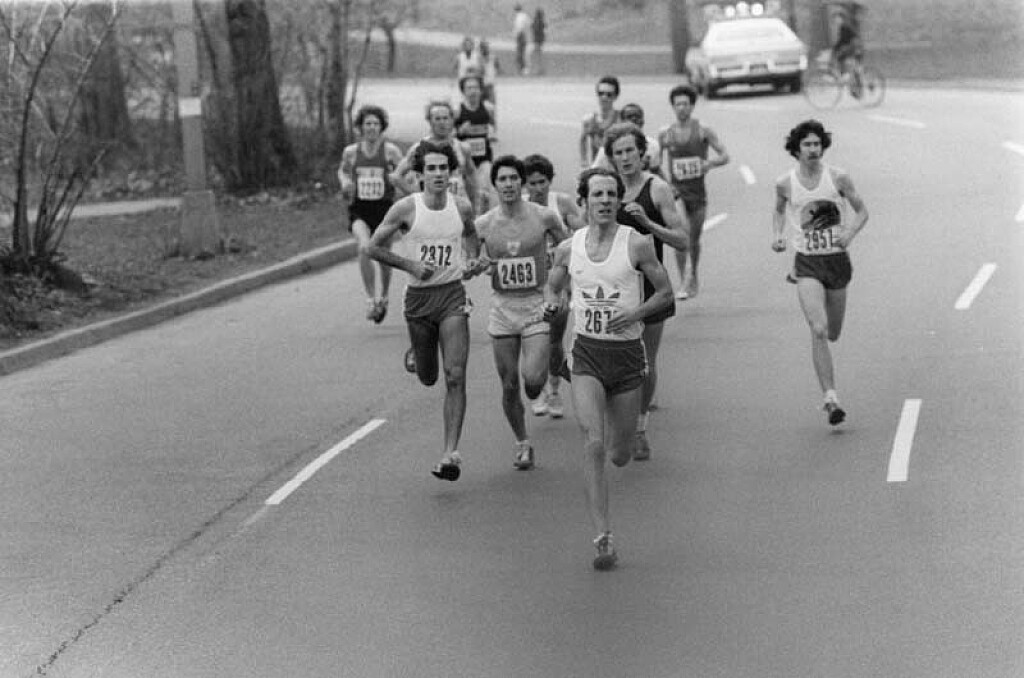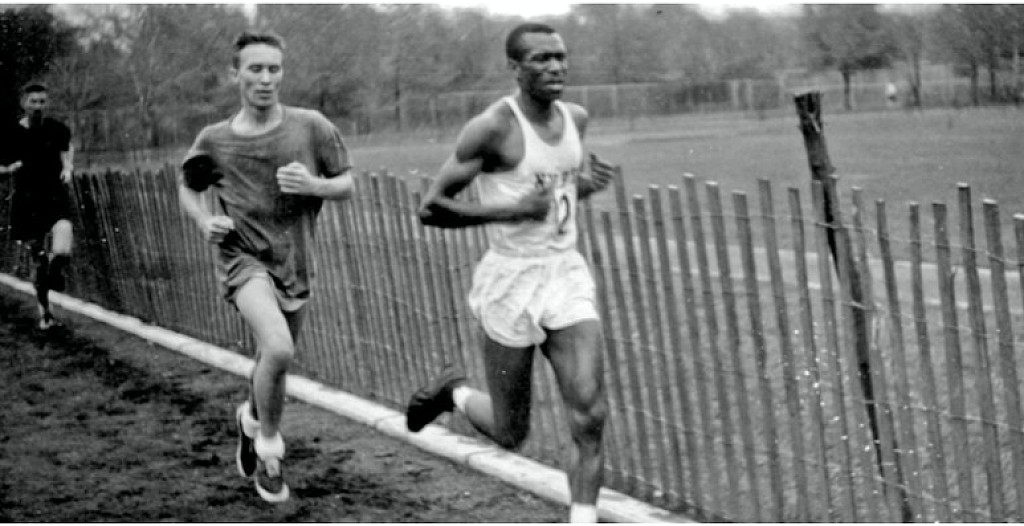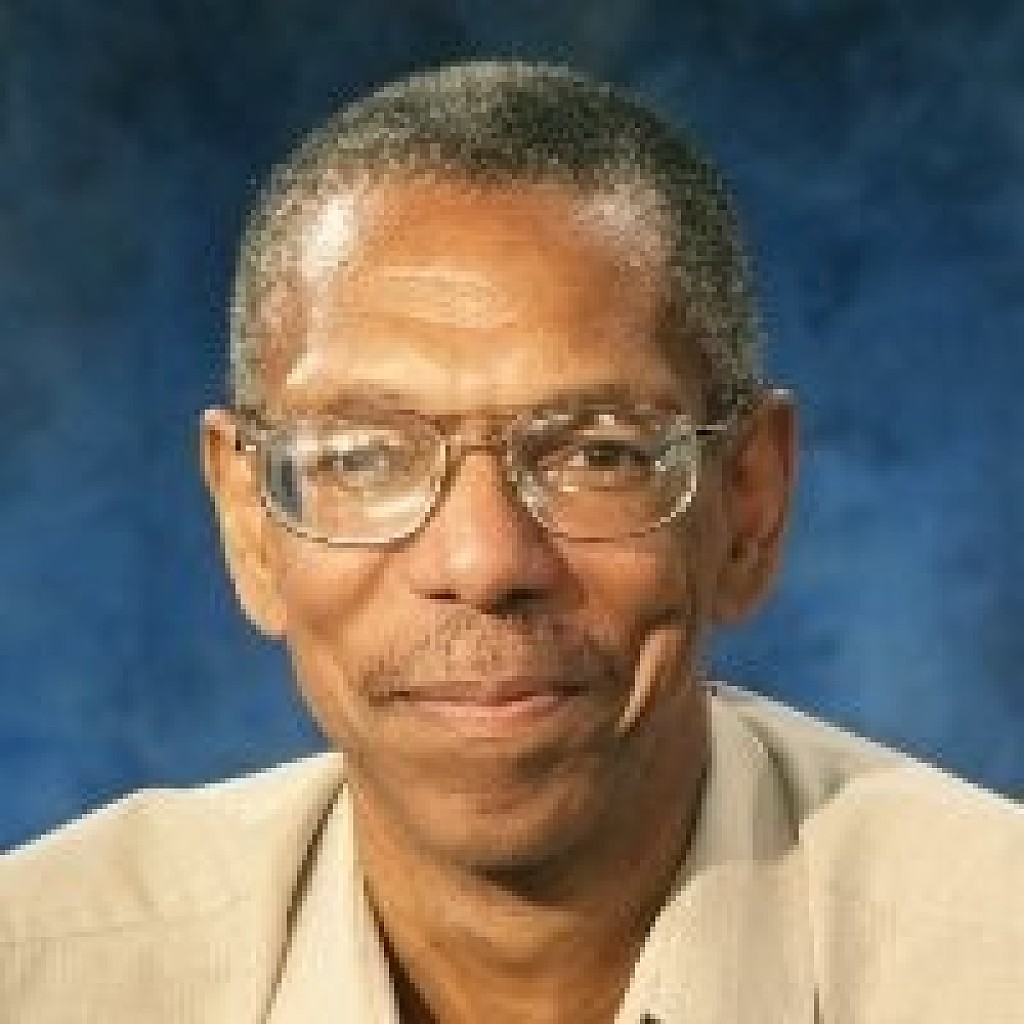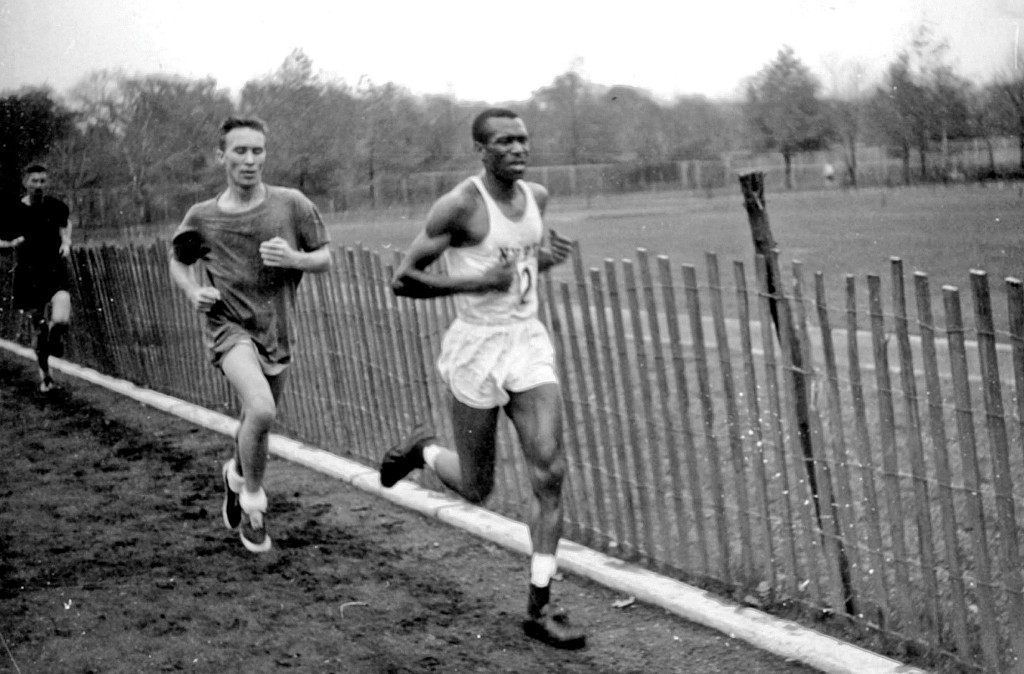Running News Daily
Running News Daily is edited by Bob Anderson. Send your news items to bob@mybestruns.com Advertising opportunities available. Train the Kenyan Way at KATA Kenya and Portugal owned and operated by Bob Anderson. Be sure to catch our movie A Long Run the movie KATA Running Camps and KATA Potato Farms - 31 now open in Kenya! https://kata.ke/
Index to Daily Posts · Sign Up For Updates · Run The World Feed
Articles tagged #Corbitt
Today's Running News
When Will Eliud Kipchoge Slow Down?
What we can learn from the world’s greatest distance runner of all-time while he’s still in his prime
Eliud Kipchoge has expanded the universe of what’s humanly possible in the marathon, and he will forever remain a legend in the sport of long-distance running.
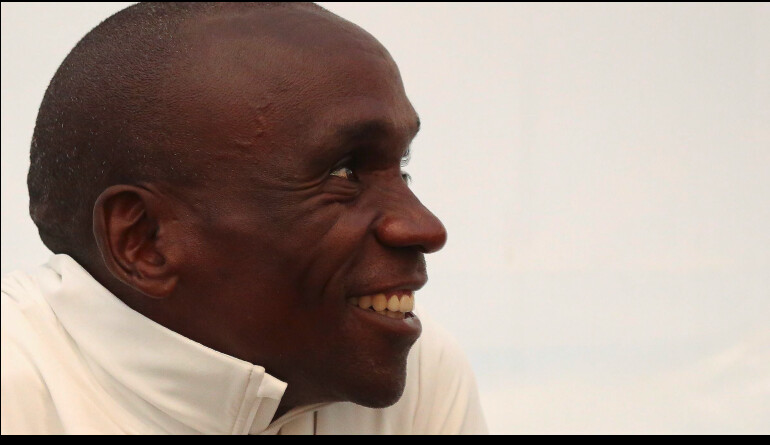
Not only for himself, but especially for those who have come after him. That includes everyone, both elite and recreational runners, who are preparing a marathon this fall or some distant point in the future. His current 2:01:09 world record and his barrier-breaking 1:59:40 time-trial effort in 2019 are legendary feats, both for the current generation of runners and for all time.
The 38-year-old Kenyan marathoner is a once-in-a-lifetime athlete, but time waits for no one, and especially not a long-distance runner. Like all elite athletes, his time at the top is limited, but fortunately, there is still time to immerse in the inspirational examples he’s providing.
Kipchoge recently announced he’ll return to the Berlin Marathon on September 24, where, last year, he won the race for the fourth time and lowered the world record for the second time. It is most likely what will be the beginning of a grand denouement as he goes for another gold medal at the 2024 Olympics next summer in Paris.
Given that he won his first global medal in the City of Light—when, at the age of 18, he outran Moroccan legend Hicham El Guerrouj and Ethiopian legend-in-the-making Kenenisa Bekele to win the 5,000-meter run at the 2003 world championships—it would certainly be one of the greatest stories ever told if he could win the Olympic marathon there next year when he’s nearly 40.
Certainly he’ll run a few more races after the Olympics—and maybe through the 2028 Olympics in Los Angeles—but, realistically, it is the start of a farewell tour for a runner who will never be forgotten.
Don’t get me wrong: I’m not at all writing Kipchoge off. In fact, I am excited to see him run in Berlin and can’t wait to watch next year’s Olympic marathon unfold. But just as we’ve watched Michael Jordan, Tiger Woods, Serena Williams, Shalane Flanagan, Usain Bolt, Allyson Felix, and other elite athletes succumb to the sunsetting of their peak performance level, so too will Kipchoge eventually suffer the same fate.
What I’m saying here is that we still have time to watch and appreciate Kipchoge eloquently working his magic and continue to be inspired in our own running and other pursuits in life. Remember how we marveled at Michael Jordan’s greatest in “The Last Dance” more than 20 years after his heyday? This is the start of the last dance for Kipchoge, who, like Jordan, is much, much more than a generational talent; he’s an all-time great whose legacy will transcend time.
Running has seen many extraordinary stars in the past 50 years who have become iconic figures— Frank Shorter, Joan Benoit Samuelson, Ted Corbitt, Carl Lewis, Steve Jones, Paul Tergat, Catherine Ndereba, Paula Radcliffe, Haile Gebrselassie, Kenenisa Bekele, Mary Keitany, Brigid Kosgei, and Kilian Jornet, to name a few—but none have come close to the body of work and global influence of Kipchoge.
Not only is Kipchoge one of the first African athletes to become a household name and truly command a global audience, but he’s done more than other running champions because of he’s been able to take advantage of this advanced age of digital media to deliberately push positive messages and inspiring content to anyone who is willing to receive it.
Kipchoge has won two Olympic gold medals, set two world records, and won 17 of the 19 marathons he entered, but he’s so much less about the stats and bling and more sharing—to runners and non-runners alike—that “no human is limited” and also that, despite our differences, we’re all human beings faced with a lot of the same challenges in life and, ultimately, hard work and kindness are what put us on the path to success.
How can an average runner who works a nine-to-five job and juggles dozens of other things in daily life be inspired by an elite aerobic machine like Kipchoge?
He is supremely talented, no doubt, but many elite runners have a similar aerobic capacity to allow them to compete on the world stage. What Kipchoge uniquely possesses—and why he’s become the greatest of all-time—is the awareness and ability to be relentless in his pursuit of excellence, and the presence and good will of how beneficial it is to share it.
If you haven’t been following Kipchoge or heard him speak at press conferences or sponsor events, he’s full of genuine wisdom and encouragement that can inspire you in your own running or challenging situation in life. His words come across much more powerfully than most other elite athletes or run-of-the-mill social media influencers, not only because he’s achieved at a higher level than anyone ever has, but because of his genuine interest in sharing the notion that it’s the simplest values—discipline, hard work, consistency, and selflessness—that make the difference in any endeavor.
This is not a suggestion to idolize Kipchoge, but instead to apply his wisdom and determination into the things that challenge you.
“If you want to break through, your mind should be able to control your body. Your mind should be a part of your fitness.”
“Only the disciplined ones in life are free. If you are undisciplined, you are a slave to your moods and your passions.”
“If you believe in something and put it in your mind and heart, it can be realized.”
“The best time to plant a tree was 25 years ago. The second-best time to plant a tree is today.”
Those are among the many simple messages that Kipchoge has lived by, but he also openly professess to giving himself grace to take time for mental and physical rest and recovery. It’s a simple recipe to follow, if you’re chasing your first or fastest marathon, or any tall task in life.
Kipchoge seems to defy age, but his sixth-place finish in the Boston Marathon in April proved he’s human. As much as it was painful to watch him falter, it was oddly refreshing and relatable to see him be something less than exceptional, and especially now that he’s tuning up for Berlin. He has nothing left to prove—to himself, to runners, to the world—but he’s bound to keep doing so just by following the same simple, undaunted regimen he always has.
There will be other young runners who will rise and run faster than Kipchoge and probably very soon. Fellow Kenyan Kelvin Kiptum—who has run 2:01:53 (Valencia) and 2:01:25 (London) in his first two marathons since December—seems to be next in line for Kipchoge’s throne of the world’s greatest runner. But even after that happens, Kipchoge’s name will go down in history alongside the likes of Paavo Nurmi, Abebe Bikila, Emil Zátopek, Grete Waitz, Shorter and Samuelson because of how he changed running and how he gave us a lens to view running without limits.
Berlin is definitely not the end of Kipchoge’s amazing career as the world’s greatest long-distance runner. I fully expect him to win again in an unfathomable time. But the sunset is imminent and, no matter if you are or have ever been an aspiring elite athlete at any level, a committed recreational runner, or just an occasional jogger trying to reap the fruits of consistent exercise, his example is still very tangible and something to behold.
by Outside Online
Login to leave a comment
The Many Gifts of Joe Kleinerman
Runner. Soldier. Coach. NYRR founder. Administrator. Advocate. Volunteer.Joe Kleinerman was all these things, and more. He gave so much to running and to NYRR. We run to celebrate and honor him at the annual Joe Kleinerman 10K
An Early Start in Running
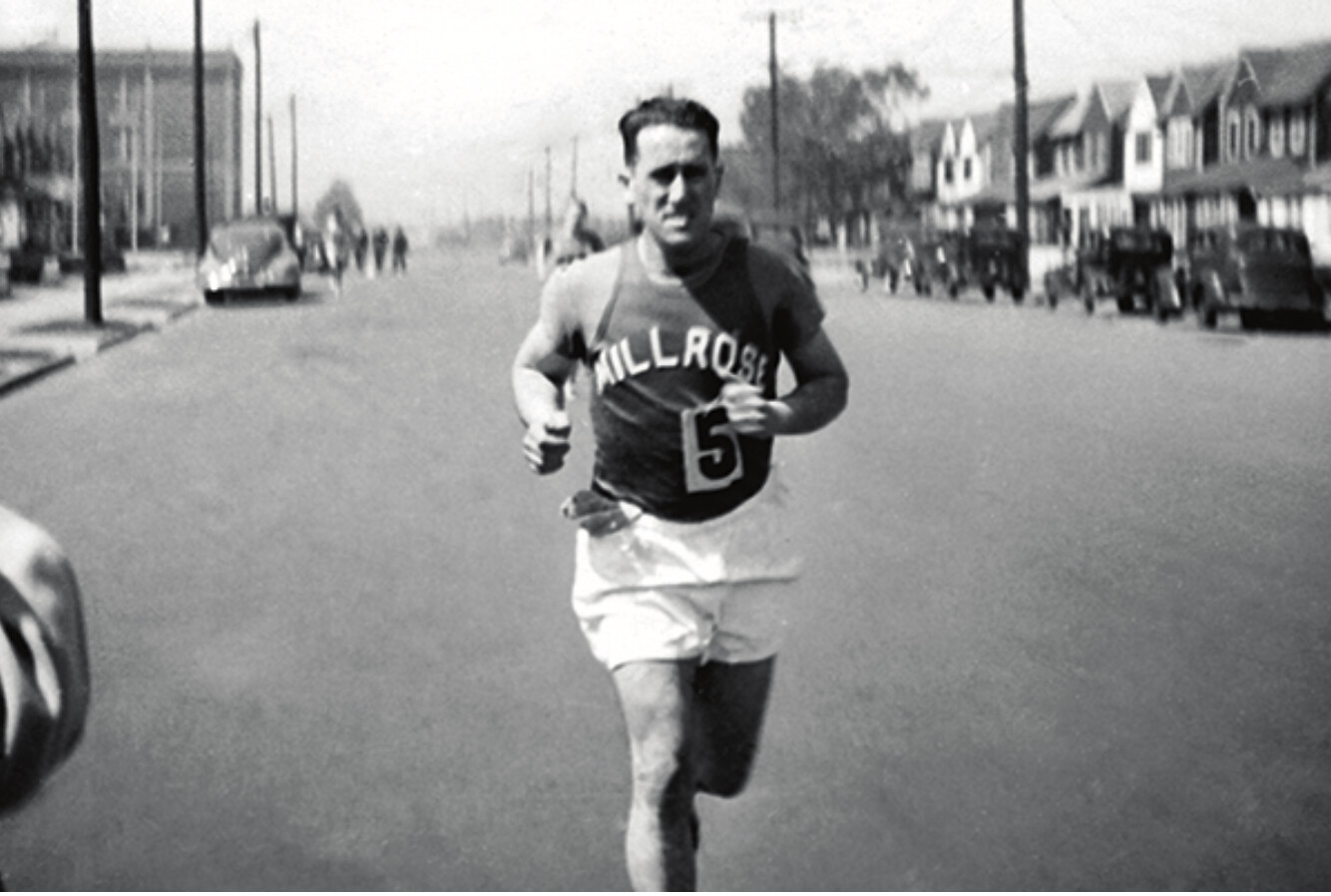
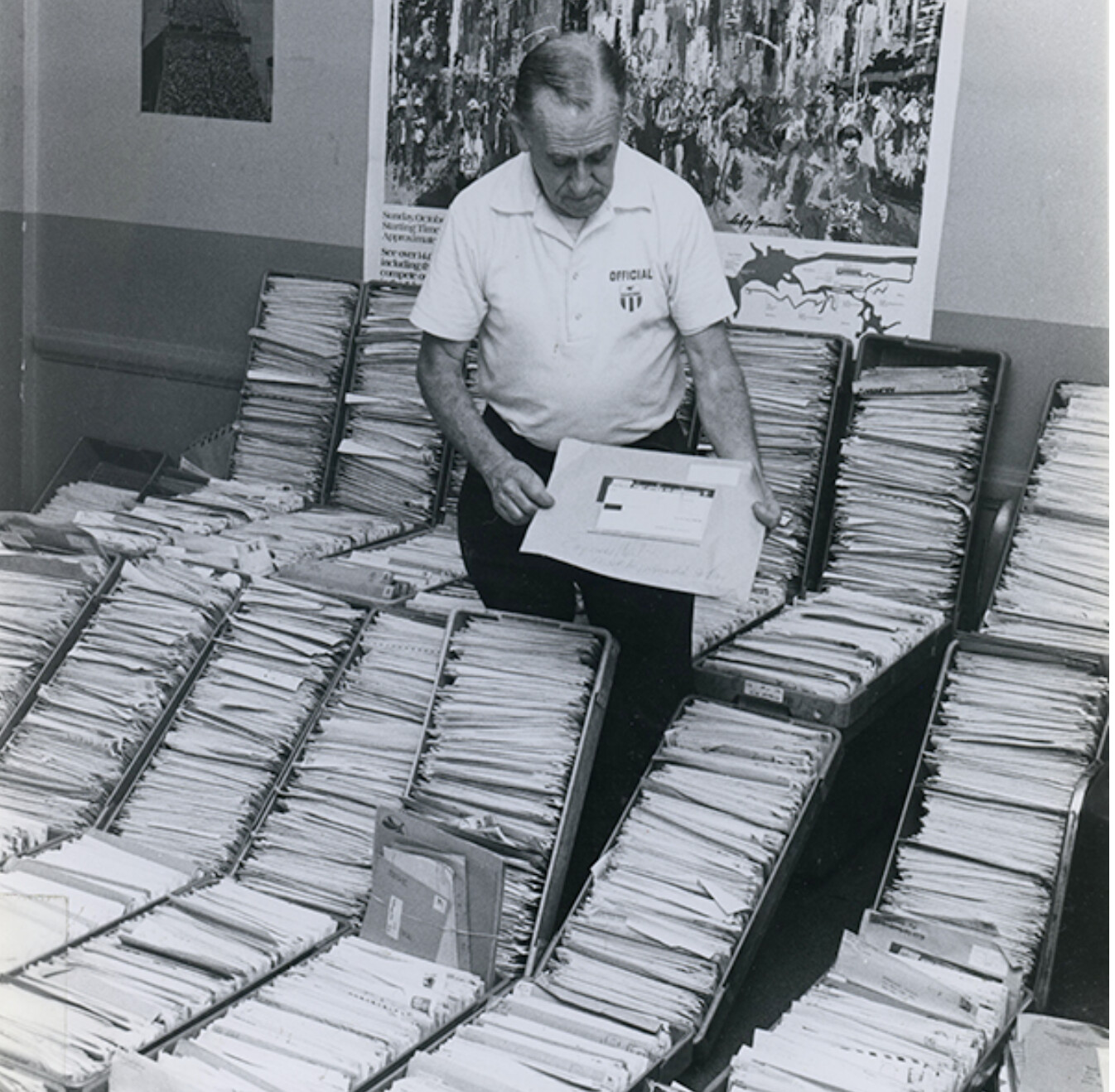
Joe was born in 1912 in Spring Valley, NY, the youngest of four children in a family recently immigrated from Ukraine. He grew up in New York City and started running as a teenager after he and one of his brothers attended the Millrose Games at Madison Square Garden. Joe captained the cross country team at DeWitt Clinton High School, where he also ran track (half-mile and mile). During the summers he trained at Macombs Dam Park in the Bronx.He competed for City College, then won an athletic scholarship to Kansas State University. It was the mid-1930s, the depths of the Great Depression, and when Joe received a job offer with the U.S. Postal Service back in NYC, he could ill afford to turn it down. He returned home to take the job and would remain a Postal Service employee for 32 years. And he continued to run. Joe joined the Millrose Athletic Association and became one of their standout competitors, placing in the top 10 at the Boston Marathon 1941 and 1942 and running a best time of 2 hours and 38 minutes. In an interview years later he noted: “That’s 2:38 with sneakers, on dirt roads, and without any water stops!”
He served as a staff sergeant in the U.S. Army Air Corps during World War II, including 19 months with the 599th Airborne in the South Pacific. He once placed fifth in a 1-mile race in Hawaii on a course laid out by another NYC serviceman also named Joe – last name DiMaggio.
"Joe ran hundreds of races before injuries caused him to stop competing at age 53. He stopped running at age 70 but was able to resume light jogging after knee-replacement surgery in his 80s.
From Competitor to Coach
Joe became the assistant coach of Millrose in 1958 and head coach in 1967. He enthusiastically recruited runners to Millrose, making the team a powerhouse, and was known to many as “Coach” for the rest of his life.At Joe’s memorial service, longtime Millrose runner and 1974 New York City Marathon winner Norb Sander recalled, “Joe was a great coach. He did not intrude. He didn’t criticize you. He was behind the scenes always to make sure that things went smoothly.”
Administrator and NYRR FounderJoe’s interest in working “behind the scenes” led him increasingly toward the administrative side of road racing. In the 1950s all competitive running in the U.S. was governed by the Amateur Athletics Union (AAU), which prohibited women from running distances over a mile, repeatedly failed to take a stand against racial segregation, and discouraged age-group competition. These regressive restrictions and biases frustrated Joe and other runners. In 1958 they formed the Road Runners Club of America (RRCA) to administer road racing.
Later that year Joe, Ted Corbitt, Harry Murphy, and about 40 other runners founded NYRR, then known as the Road Runners Club – New York Association. Joe served as NYRR’s vice president and secretary. He's pictured above with Corbitt and New York City Marathon co-founder Vince Chiappetta. He never sought the limelight, preferring to work behind the scenes. Joe directed and scored countless races and meets – a laborious and task in an era when all recordkeeping was done by hand.
Advocate and VolunteerJoe also worked tirelessly to make running more inclusive and equitable. In 1967, along with Nina Kuscsik and New York City Marathon co-founder Vince Chiappetta, he successfully led a movement to allow women to run AAU-sanctioned races longer than a mile. Later he helped put together a U.S. women’s team for the fabled London-to-Brighton 52-mile road race in England – and saw a dream fulfilled when the women won the race.
Together with Ted Corbitt and others he introduced “veterans” races for runners age 35 and older as well as ultramarathon (50K and 50-mile) national championships. As far as it’s known, Joe never received any compensation for his thousands of hours of service to running. In his old age he remained close to the NYC racing scene and to NYRR’s offices on East 89th Street, where the lobby was named after him following his 90th birthday. He loved to tell stories and to marvel at the growth of running and NYRR over the decades."I considered Joe the heart and soul of Road Runners Club – New York Association," said Gary Corbitt, the son of Ted Corbitt. "Many of the innovation the sport enjoys today were started in New York in the 1960s. My father felt that Joe put in more volunteer hours for the betterment of our sport than anyone else worldwide."
Joe died on Veterans Day in 2003 at age 91. At his memorial service, friends shared their memories of a man who lived large, his gruff manner belying a boundlessly generous spirit. “He barked,” recalled Joe’s Millrose teammate John Garlepp. “If you don’t get the bark, there’s something wrong, either he’s not feeling well or he doesn’t like you.”
Joe's niece, Ruth Kleinrock, said at the service, "Having an uncle who was so instrumental in the sport of running, especially women's running, is something of which my sisters and I will always be proud."Joe Kleinerman dedicated his life to running and creating opportunities for all. We’re grateful to him for it.
Login to leave a comment
Joe Kleinerman Classic 10K
Make good on your New Year’s running resolution by taking part in the Joe Kleinerman 10K! Kleinerman, a founding member of NYRR, the longtime coach of the Millrose Athletic Association, and a beloved NYRR employee until his death in 2003 at age 91, was a true competitor. Take on the challenge of this chilly 10K through beautiful Central Park. The...
more...First Finishers from Inaugural 1970 Race will be honored at 50th Running of the TCS New York City Marathon this weekend
To mark the 50th running of the TCS New York City Marathon, several of the First Finishers from the inaugural 1970 race will be honored at the TCS New York City Marathon Opening Ceremony Presented by United Airlines on Friday, November 5, and at the Marathon finish line on Sunday, November 7.
The first New York City Marathon, organized by New York Road Runners, took place on September 13, 1970, in Central Park, with an entry fee of $1 and a budget of $1,000. Of the 127 registered runners, there were 55 finishers. The race ultimately expanded to all five boroughs in 1976. To date, the event has seen more than 1.2 million finishers.

“The TCS New York City Marathon has influenced and inspired so many people around the world for more than five decades, and to think it all started with 127 runners in Central Park is incredible,” said Ted Metellus, Vice President of Events for NYRR and Race Director of the TCS New York City Marathon. “We are honored to bring back some of the First Finishers from the 1970 race to have them with us on marathon day this year, and to honor them for being the first to take part in what has grown to become the world’s premier marathon.”
Former FDNY firefighter Gary Muhrcke was the first New York City Marathon champion, coming off the night shift at work to win the race. He still runs weekly in Central Park to this day, and his wife makes the laurels that the champions wear after their victories.

Larry Trachtenberg will be the sole runner from 1970 who will run in the 50th marathon. He was born and raised in Queens, and ran at Long Island City High School and regularly in Van Cortlandt Park, where he trained for the first marathon.
Joining Muhrcke and Trachtenberg in New York will be a number of other First Finishers from 1970, including:
· Arturo Montero – He came to the U.S. from Chile in 1960. He has run more than 100 marathons, 31 of them New York City Marathons (2016 being the last one). The 1970 race was his first marathon.
· Bill Newkirk – Born in the Bronx, he regularly ran around Central Park and met Fred Lebow during his runs. He has now participated in more than 20 marathons, including more than 10 New York City Marathons. He also helped NYRR by measuring courses with his friend, Ted Corbitt.
· Ed Ayres – After growing up in New Jersey, he ran the 1970 race with his brother, Glen; both of them finished in the top 10. He went on to start Running Times magazine.
· Gerald Miller – The oldest living First Finisher at 92 years old is originally from Queens and moved to the Upper West Side of Manhattan after he got married. He heard about the first marathon at the YMCA. He has run more than 20 New York City Marathons and got his whole family into running.
· Jim Isenberg – He grew up in Boston and has run in more than 100 marathons, including the New York City Marathon four times. He ran for Princeton University and is friends with Larry Trachtenberg, who told him about the first marathon. He was a professor of physics and mathematics at the University of Oregon.
· Joe Martino – He took his first trip to New York as a teenager with Rick Sherlund, sleeping on a mattress the evening before the marathon at the local YMCA. He also ran the marathon in 1978 and became friends with two-time winner Tom Fleming.
· Moses Mayfield – He was the fastest African American marathoner in history at the time with a time of 2:24:29; he led the 1970 marathon for 24 miles of the race before being passed by Muhrcke.
· Ralph Garfield – Originally, from England, he came to the U.S. in 1961 and would regularly run in Central Park on the Reservoir. He has run 14 marathons (eight New York City Marathons) and still jogs/walks to this day.
· Rick Sherlund – At 16 years old, one of the youngest runners of the first marathon, he traveled to NYC with his friend, Joe Martino, to participate in the marathon. He ran the first 20 miles and then had a cream soda before cramping and having to walk the last six miles.
· Steve Grotsky – Originally from the Bronx, he was a fixture in the New York running scene; he went on to run for Princeton University and completed 50 marathons.
· Tom Hollander – He ran the marathon after graduating from high school in Connecticut, and ran again in 1977. In 1972, he won the Cherry Tree Marathon.
· Vince Chiappetta – Along with Fred Lebow, he co-directed the first New York City Marathon and is a co-founder of NYRR. He has run in more than 100 marathons.
· Nina Kuscsik – She changed the sport of running by breaking through the “Boys’ Club” barrier and changing the rules so they included women. She opened doors for future generations. While she did not finish the race, she is the only woman among the 127 entrants who ran in the 1970 New York City Marathon.
About New York Road Runners (NYRR)
NYRR’s mission is to help and inspire people through running. Since 1958, New York Road Runners has grown from a local running club to the world’s premier community running organization. NYRR’s commitment to New York City’s five boroughs features races, virtual races, community events, free youth running initiatives and school programs, the NYRR RUNCENTER featuring the New Balance Run Hub, and training resources that provide hundreds of thousands of people each year with the motivation, know-how, and opportunity to Run for Life. NYRR’s premier event is the TCS New York City Marathon. Held annually on the first Sunday in November, the race features a wide population of runners, from the world’s top professional athletes to a vast range of competitive, recreational, and charity runners. To learn more, visit www.nyrr.org.
by Running USA
Login to leave a comment
TCS New York City Marathon
The first New York City Marathon, organized in 1970 by Fred Lebow and Vince Chiappetta, was held entirely in Central Park. Of 127 entrants, only 55 men finished; the sole female entrant dropped out due to illness. Winners were given inexpensive wristwatches and recycled baseball and bowling trophies. The entry fee was $1 and the total event budget...
more...The Six-Mile Central Park Loop Has Been Renamed After Running Pioneer Ted Corbitt
“The Father of Long-Distance Running” receives a much-deserved honor.
Central Park has long played a significant role in New York City’s running culture. Runners who visit the city carve out time for a few miles in the famous park. Those who call New York City home circle the loops during long runs. It is home to the New York City Marathon finish line.

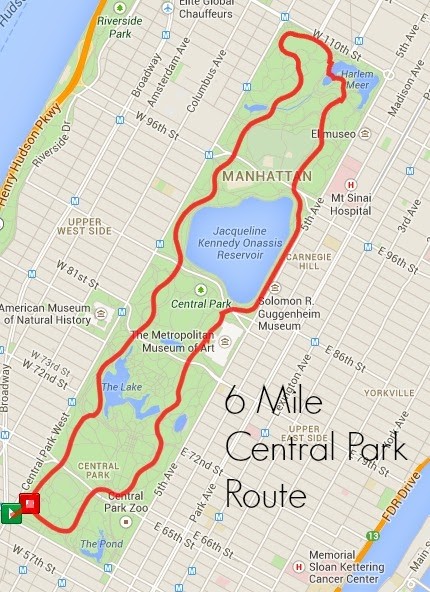
And now, the most famous running loop within the 51-blocks long park is named after running pioneer and Olympian Ted Corbitt.
The six-mile route—now called the “Ted Corbitt Loop—will feature six landmark street signs commemorating Corbitt along the path, and will have a NYC Parks-branded sign at the base of Harlem Hill at 110th St. and Adam Clayton Powell Boulevard in Harlem.
“As an avid runner, I am incredibly proud to commemorate the contributions of a man that inspired me and countless others to push through boundaries and live more abundantly,” NYC Parks Commissioner Mitchell Silver said in a statement. “It is an honor to celebrate Black History Month this year by shining light on Ted Corbitt’s influence and advocacy for underrepresented groups in running and beyond. May his legacy and pioneering spirit live on to inspire the next generation of runners to strive for greatness, progress, and peace.”
The move comes as NYC Parks continues to work toward ending systemic racism and providing a better representation of all races. Part of that is honoring Corbitt, a true pioneer of the sport who earned the title, “the father of long-distance running.”
In a 50-year running career, Corbitt ran 199 marathons and ultramarathons. He was the first Black American to represent the U.S. in the Olympic marathon in 1952, and he wore the No. 1 bib in the first-ever NYC Marathon in 1970. He was the founding president of NYRR and was an inaugural inductee into the National Distance Running Hall of Fame. These are still only some of his accomplishments.
His legacy is one that should be heralded in the Mount Rushmore of running. His name on the famous Central Park loop is a start.
“My father and other men and women volunteers worked tireless hours to help invent the modern day sport of long distance running,” Corbitt’s son Gary Corbitt said in a statement. “Many of the innovations in the sport were started in New York during the 1960s and early 1970s. This naming tribute celebrates all these pioneers.”
by Runner’s World
Login to leave a comment
The history of black running in America
Ted Corbitt laid the basis for measurement of road running courses in the USA and was the founding president of NYRR (New York Road Runners. He was black; and many assume he was the first black American endurance runner of historic importance.
Corbitt (1919–2007) was a formidable figure in long-distance running, but he was far from the first – or the only – notable African American long-distance runner. The history of black running in America dates back to at least the 1870s and is both rich and profound.
Gary Corbitt, Ted’s son, has spent years researching and writing about black American running and bringing many untold stories to life. He founded the Ted Corbitt Archive to preserve and highlight some of the amazing and almost forgotten stories of black American runners, coaches, clubs, teams, events, supporters and leaders.
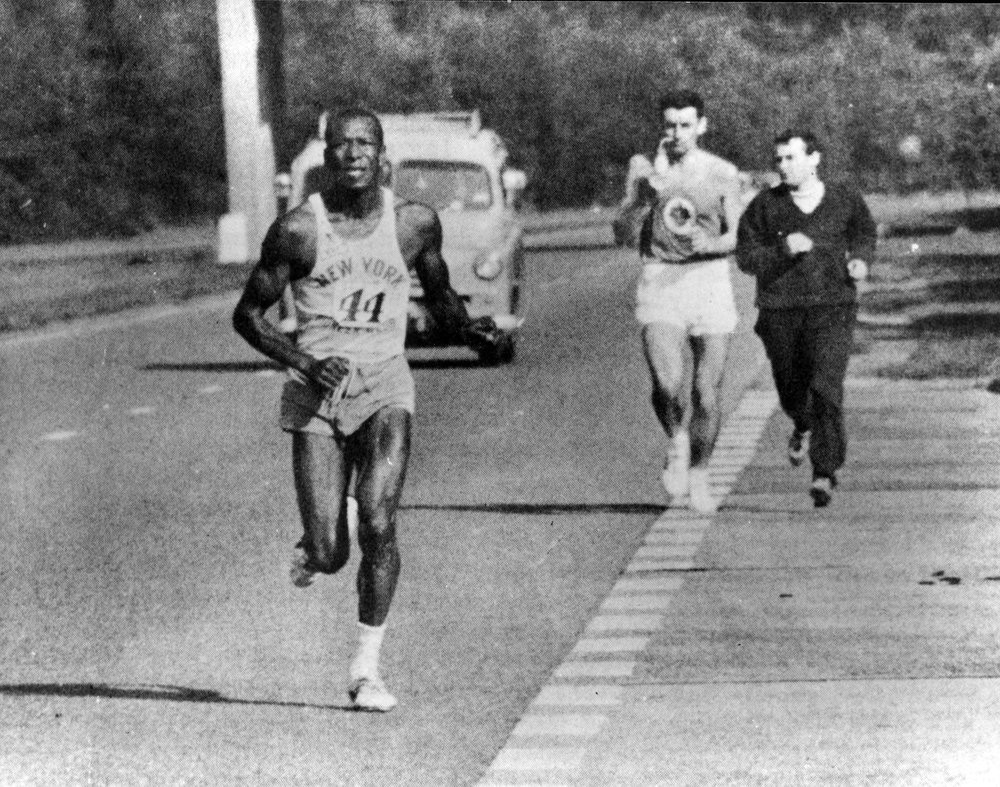
“My dad always told me he wasn’t alone – that there were other great black American long-distance runners,” says Gary. “I didn’t know how rich the story was until I started looking into it myself.”
Using books, articles, and a huge amount of primary documents, Gary created a “Black Running History 100 years (1880–1979)” timeline that spanned 100 years (1880–1979). “The work is not finished yet,” he says. “I have probably captured 75 percent of what is known from this 100-year period.”
He was inspired by a story his father told him about a letter he received from a young black runner. “The runner wrote that he wished he had known about my dad when he was in school and the coaches steered him away from long-distance running and into sprints,” said Gary. “If he’d had a black long-distance runner like my father as a role model, things might have turned out differently. I want today’s young black runners to know that they are part of a rich history and that they have many role models.”
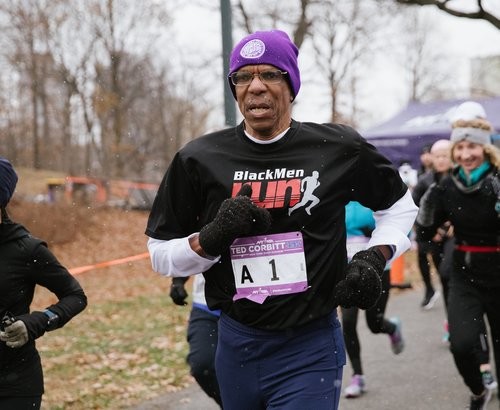
Here are just a few of the highlights from the Chronicle. See tedcorbitt.com for more.
Frank Hart and the marchers (pedestrian) movement
In the late 1870s the most popular sport in the United States – and a few other countries – was pedestrianism: multi-day running and walking competitions over hundreds of miles, often on covered lanes in front of large crowds. Participants came from all walks of life and one of the most successful was a young black runner named Frank Hart (above, left). Born Fred Hichborn in Haiti in 1858 he moved to Boston as a teenager, worked as a grocer, and started running long distance runs to make extra money. He changed his name when he became a professional “walker” (pedestrian).
Hart won the prestigious O’Leary Belt Six Days at Madison Square Garden in 1880 completing an astonishing 565 miles – a world record. The runner-up, William Pegram, was also black. Hart’s success earned him fame and fortune; his image was featured on trading cards (the forerunner of baseball cards) nationwide, and he likely made over USD 100,000 in his lifetime thanks to the legal gambling that was at the heart of the sport and even allowed participants to wager on themselves.
Unfortunately Hart also endured racism, including heckling and physical harassment from viewers and snubs and slurs from his rivals. In the late 1880s baseball – with its rigid racial segregation policy – ousted walking in popularity. As an excellent all-round athlete, Hart joined a “Negro League Team” for a few years.
The spirit of the march (pedestrian) era inspired Ted Corbitt, who ran (and won) many ultra runs, completing 68.9 miles in 24 hours at the age of 82. “My father talked about running 600 miles in six days and walking 100 miles in 24 hours,” said Gary. “These were milestones from the marchers’ days, the meaning of which I only fully understood much later, after his death.”
Early NYC running clubs and marathon runners
Several black running clubs in NYC in the early 1900s, including the Salem Crescent Athletic Club, St. Christopher’s Club of NY, and the Smart Set Athletic Club of Brooklyn, showcased the talents of a generation of black runners at sprint to marathon distances.
In 1919, Aaron Morris of the St. Christopher Athletic Club finished sixth in the Boston Marathon in 2:37:13, making him the first known African American to run the race. At the 1920 Boston Marathon, Morris’ teammate Cliff Mitchell finished eighth in 2:41:43. Mitchell finished 13th in Boston in 1921, and another St. Christopher runner, John Goff, finished ninth that year in 2:37:35.
The New York Pioneer Club, which was founded in Harlem in 1936 by trainer Joe Yancey and two other black men, campaigned to give everyone interested and qualified regardless of race a chance. “It was an integrated running team that preceded the integration of professional sport,” says Gary Corbitt. Ted Corbitt joined the Pioneer Club in 1947 and in 1958 he and other members formed the core of the New York Road Runners.
Marilyn Bevans
Opportunities for female long-distance runners were few before the early 1970s. NYRR always allowed women as members and in its events, but the Boston Marathon excluded women until 1972, the same year that a women’s 1500m (less than a mile) run was added to the Olympic programme.
In the 1970s Marilyn Bevans of Baltimore emerged as the first competitive modern black American marathon runner. She was the first black American to win a marathon – the Washington Birthday Marathon in Maryland in 1975. She finished fourth in the 1975 Boston Marathon with a time of 2:55:52, making her the first black American to win a marathon run in under three hours. She completed a total of 13 marathons under three hours. Bevans later became a coach and is now in her 70s.
by Gordon Bakoulis
Login to leave a comment
Gary Corbitt is being honored by the National Black Distance Running Hall of Fame
The National Black Marathoners Association (NBMA) is pleased to announce that their Official Historian and Researcher, Gary Corbitt, will be one of the 2019 National Black Distance Running Hall of Fame honorees.
Gary, son of Ted Corbitt, "the father of long distance running," is being recognized for his contribution to the research, preservation, verification, and distribution of African-American distance running history.
Tony Reed, NBMA Executive Director says, "Gary Corbitt is the 'Carter G. Woodson' of African American distance running history. Without Gary's knowledge and support, there may not be a National Black Distance Running Hall of Fame.
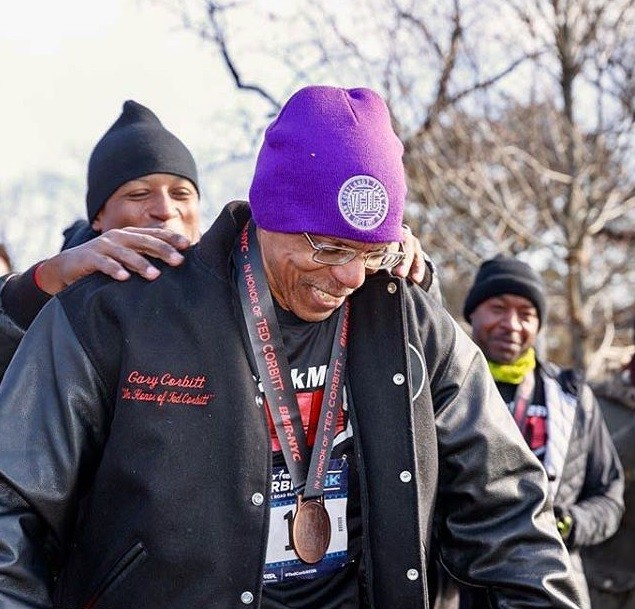
He produced the African American Long Distance and Middle Distance Running History Timeline (1880 – 1979). This compilation is the first of its kind and is the Hall of Fame's foundation."
Gary says, "I accept this honor because I know my contributions to the preservation and dissemination of long distance running - track & field history is important. I'm grateful that in retirement I have time and interest in filling this need, and that my work is appreciated and making a difference."
The induction ceremony will occur at the 2019 NBMA Annual Summit Banquet at the Little Rock Marathon on Saturday, March 2. This is the organization's fifteen-year anniversary. The 100th anniversary of Ted Corbitt's birth and the fifth and tenth anniversaries of Meb Keflezighi's victories at the Boston and New York City Marathons, respectively, will also be recognized with commemorative medallions. Both were previously inducted in the Hall of Fame.
Login to leave a comment
Ted Corbitt "The Father of Long Distance Running"
Login to leave a comment


